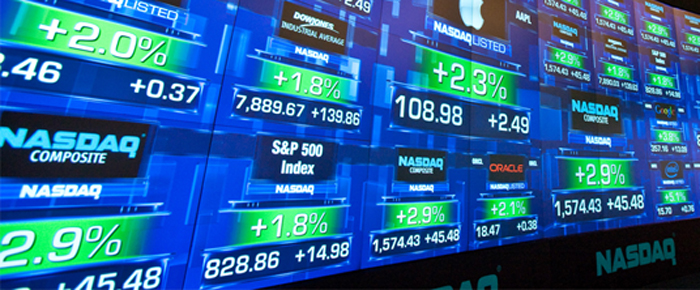
By Haddon Libby
After eighteen years in existence, exchange traded funds (aka ETFs) just passed the $2 trillion mark in total monies invested. Given that it took fourteen years for ETFs to reach $1 trillion, the rapid doubling is quite an accomplishment. Nevertheless, ETF holdings are dwarfed by mutual fund holdings that total $15 trillion.
If you are unfamiliar with what an ETF is, it is a security that tracks an index, commodity or basket of assets yet trades like a stock. The best known ETF tracks the value of the S&P 500 and trades under the name Spiders (SPDR) with a ticker symbol of SPY.
Unlike a mutual fund which only trades at the end of the business day, you can buy and sell ETFs at any point during the day as its price varies just like any stock. Additionally, you can buy ETFs on margin and sell them short.
As a brief refresher, buying on margin is simply buying an investment where you do not have cash so you take out a loan from your brokerage firm that holds your investments as collateral. Selling short is typically done when the investor thinks an asset is going down in value. In this way, the investor profits from a decline in the value of the underlying asset that they shorted.
ETFs bear far lower costs than mutual funds. According to the Wall Street Journal, the typical ETF has an annual expense ratio or cost of 0.44%. Investopia states that the average mutual fund charges approximately 1.5% or three times as much. Given the cost discrepancy, it is a bit of a surprise that most mutual funds do not outperform ETFs.
One of the problems associated with mutual funds is the investor seldom knows what (s)he owns. As such, (s)he might have multiple mutual funds holding the same underlying assets. Overexposure to some assets is a hidden risk that many mutual fund investors are unaware of due to a lack of transparency as it relates to the mutual funds holdings. In comparison, you know exactly what you own when holding an ETF.
When it comes to controlling how much you pay in taxes in a given year, mutual funds cannot match ETFs. As ETFs trade just like stocks, you decide when you want to sell and recognize a gain or a loss. The problem with mutual funds is that you might have to pay taxes on your mutual fund investment even though the mutual fund went down in value during the year. This happens because the mutual fund manager is buying and selling stocks and/or bonds with no consideration as to your personal tax situation.
The largest ETF in terms of assets managed is Barclays Inverse US Treasury Composite. This ETF goes up in value when the US Treasury market goes down in value. With $211 billion of assets under management, this ETF is a good hedge for someone holding a lot of US Treasuries and concerned that a rise in interest rates with hurt the value of their investment portfolio.
Overall, the best performing ETF over the last five years was the Ultra Consumer Services ETF (ticker UCC) with a return of 487%. This ETF uses debt in seeking a return that is 2x the Dow Jones US Consumer Services Index. One of the worst performing ETFs was the Daily Small Cap Bear 3x ETF (ticker TZA) which used debt to seek a return that is 3x the reverse return of the Russell 3000 Index. This ETF has lost 99% of its value – an expected “return” given the bull markets that have existed over the last five years.
As you can see, ETFs are simple, low-cost investments that should have an important role in any investment portfolio. ETFs are especially helpful to those looking to manage the numerous risks inherent in any investment portfolio.











































